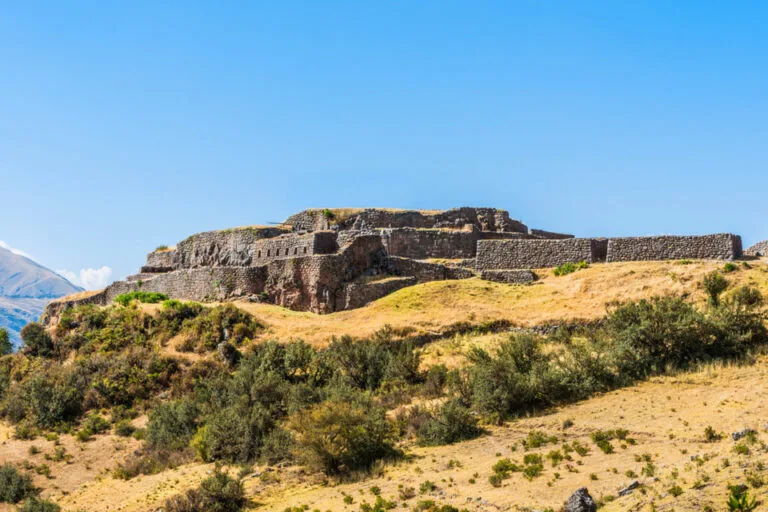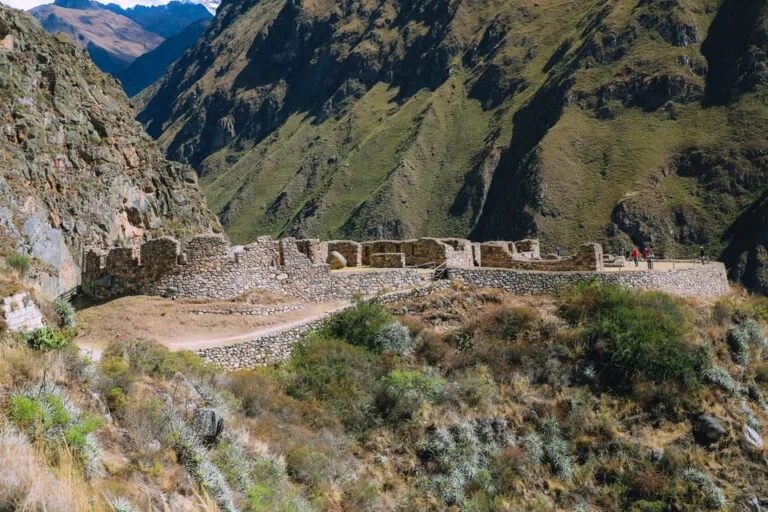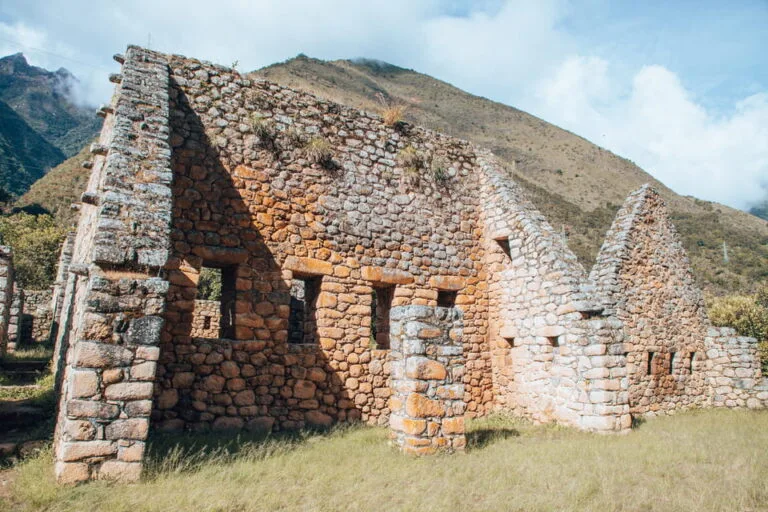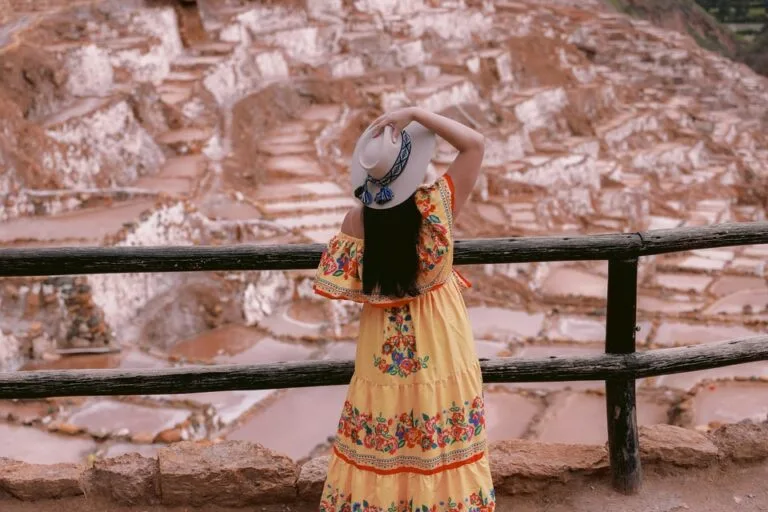Sacsayhuaman rises above Cusco like a silent witness to centuries of Andean civilization. Its cyclopean walls, visible from many parts of the city, have prompted questions about Inca engineering, social structure, and cosmology. The site is at once a monumental architectural feat and a place where tradition and contemporary identity are deeply intertwined in daily life.
Geographical Context and Access to Sacsayhuaman
The Sacsayhuaman archaeological complex is situated approximately 2 km north of the Plaza de Armas in Cusco, Peru, at an altitude of about 3,700 meters above sea level. Perched on a natural promontory, it provides panoramic views over the historic center and the valley below. This location was not accidental; high places often held spiritual significance in Andean societies, serving as points of connection between the earth (Pachamama) and celestial forces.
Most visitors reach Sacsayhuaman on foot via a series of steep cobblestone streets from the city center—a walk that typically takes 30–45 minutes depending on one’s acclimatization and pace. It is also possible to arrive by car or taxi within ten minutes. The approach offers glimpses of local neighborhoods such as San Blas and traditional artisan workshops. Entry is managed through the “Boleto Turístico del Cusco,” which covers several nearby sites.
Weather conditions can be unpredictable at this elevation. Thin air, intense sunlight during the dry season (May–October), and sudden rain showers in the wet season (November–April) require preparation—sunblock, water, appropriate clothing—especially for those unaccustomed to high altitude. Local residents are accustomed to this environment and offer advice based on generations of experience living beside the ancient stones.
Origin and Etymology of "Sacsayhuaman"
The name Sacsayhuaman comes from Quechua, the language most widely spoken in the Andes during and after the Inca Empire. The conventional translation combines two roots: “saqsay” (to satiate or satisfy) and “waman” (falcon), yielding “satisfied falcon.” According to historical interpretations, this may allude to either an abundance of resources or a symbolic guardian quality attributed to these birds in Inca thought.
Alternative etymologies exist but are less supported by linguists. Some older chronicles connect “waman” specifically with leadership or watchfulness—traits admired by the Incas. Local oral traditions often stress connections to nature spirits (“apus”) and the animal world. The falcon itself continues to hold meaning in local folklore as a creature that observes from above, suggesting a protective or surveillance role for Sacsayhuaman within the landscape.
The pronunciation (“sak-say-wah-man”) can be challenging for non-Quechua speakers; guides in Cusco frequently demonstrate it to visitors using repetition and metaphorical stories about fullness or birds. This attention to language reveals ongoing efforts by locals to keep indigenous knowledge alive while sharing it with outsiders.
Historical Development: From Killke Culture to Inca Expansion
The area now known as Sacsayhuaman shows evidence of continuous human settlement long before Inca dominance. Archaeological findings indicate that members of the Killke culture (circa 900–120 CE) constructed initial structures and terraces here. Some stonework underlies later Inca additions—a pattern common throughout Cusco—and suggests that spiritual or practical importance predated imperial expansion.
During the reign of Inca Pachacuti (1438–1471/72), conception of what would become Sacsayhuaman shifted dramatically. Pachacuti reorganized Cusco as the heart of Tawantinsuyu—the four-fold Inca state—and initiated ambitious building campaigns in stone. Chroniclers such as Pedro Cieza de León describe labor forces numbering in the tens of thousands, drawn from across subject provinces through the mita system (a form of rotational communal service). Laborers quarried massive limestone blocks from nearby quarries like Muina and transported them uphill using ramps, levers, and coordinated teamwork rather than draft animals or wheels—the latter being absent in pre-Columbian Peru.
The Spanish conquest drastically altered both Sacsayhuaman’s function and its material integrity. During the 1536 siege of Cusco led by Manco Inca Yupanqui, Sacsayhuaman became a military stronghold for resisting Spanish forces; chroniclers such as Garcilaso de la Vega recount dramatic scenes fought among its walls. Afterward, much of its upper masonry was dismantled by colonial authorities for use as building material in churches and houses throughout Cusco—a fate shared by many Andean monuments after conquest.
Architecture: Techniques, Materials, Enigmas
The most celebrated aspect of Sacsayhuaman is its cyclopean masonry—three terraced zigzag walls built from enormous limestone boulders fitted together without mortar. Some stones exceed 120 metric tons in weight and more than four meters in height; their complex shapes interlock with surprising precision. No clear evidence remains regarding exactly how these stones were cut and moved into place; hypotheses include wooden levers, stone tools (since iron was unknown), sand abrasion for polishing faces, braided rope systems for transport, and coordinated human effort documented by early European observers.
This megalithic construction technique is not unique to Sacsayhuaman but is unusually refined here; similar methods appear at Ollantaytambo and parts of Machu Picchu but usually on a smaller scale. Each block at Sacsayhuaman seems individually shaped to match its neighbors—an approach that allowed some wall sections to survive earthquakes that leveled colonial buildings nearby. Local masons today sometimes demonstrate miniature versions of these techniques using river stones and wooden wedges for tourists.
Inside the complex stood towers called Muyucmarca, Paucarmarca, and Sallaqmarca according to chroniclers; only foundations remain due to systematic stone removal during colonial times. Subterranean tunnels (“chincanas”), ceremonial platforms (“usnus”), trapezoidal niches interpreted as shrines or storage spaces, water channels likely used for ritual ablutions—all testify to varied roles for Sacsayhuaman beyond military defense.
Cultural Functions: Rituals, Ceremonies, Daily Life
Despite popular references calling Sacsayhuaman a “fortress,” current archaeological consensus suggests its primary role was ceremonial rather than purely defensive. The site hosted major state events—including Inti Raymi (the Festival of the Sun)—in which thousands participated each solstice. Ritual use likely included offerings (“pagos”) to deities such as Inti (the sun) or Pachamama (the earth) as well as dances (“taki”) still performed today on its esplanade each June 24th during public reenactments organized by Cusqueño cultural institutions (see Inti Raymi official festival details).
Descriptions by Garcilaso de la Vega mention residential quarters for priests (“willka umu”), astronomers tracking celestial events from towers, storerooms holding tribute goods from across Tawantinsuyu (“collcas”), and open spaces where imperial processions could assemble without obstruction. While later periods saw some militarization—for example during sieges—the original function appears closely linked with state ideology centered around sun worship and legitimization of royal authority.
Sacsayhuaman’s integration into daily life persists in subtle ways: herders graze sheep among scattered stones; children play football nearby; artisans sell handicrafts inspired by zigzag motifs carved into walls centuries ago. For many residents of modern Cusco—especially those identifying as Quechua speakers—Sacsayhuaman represents both historical memory and a locus for contemporary cultural expression without strict division between sacred past and lived present.
Symbolism: Cosmology Embodied in Stone
Sacsayhuaman is notable not just for technical achievement but also for its symbolic geometry within Inca worldview (“cosmovisión”). Many researchers note that its ground plan resembles a lightning bolt or sawtooth pattern echoing Andean iconography found in textiles and ceramics from earlier cultures like Wari or Tiwanaku.
A widespread theory holds that Sacsayhuaman forms part of an overall puma-shaped map when considered alongside central Cusco landmarks—the city’s urban grid taking on animal symbolism significant in Quechua tradition (see Brian Bauer’s archaeological analyses). The head corresponds with Sacsayhuaman itself while rivers serve as spines or limbs. Such mapping would have reinforced connections between earthworks, natural geography, state power, and mythic narrative among inhabitants who interpreted landscapes through animist principles.
Carvings visible onsite depict serpents (“amaru”), felines (“otorongo”), condors (“kuntur”), each representing elements within Inca tripartite cosmology: underworld (Uku Pacha), earthly plane (Kay Pacha), sky realm (Hanan Pacha). Scholars debate whether these designs were intentionally planned from inception or represent subsequent layering over centuries—but local guides frequently narrate their significance when leading walks along surviving terraces.
Sacsayhuaman Through Local Eyes: Living Heritage
For residents around Cusco—from barrio San Cristóbal up toward Qenqo—the presence of Sacsayhuaman shapes daily routines as much as it anchors collective memory. Farmers tend potato plots edging ancient walls; schoolchildren learn Quechua songs referencing “Wak’a Waqya” (crying sacred places); annual festivities bring dancers dressed as mythical animals back to plazas adjoining stone ramparts.
Younger generations sometimes engage with international tourism as guides or artisans interpreting site history through contemporary media—photography projects documenting climate change impacts on exposed masonry or oral history initiatives collecting grandparents’ recollections about past Inti Raymi ceremonies before they were formalized for visitors.
In certain neighborhoods like Fortaleza or Llaullipata adjacent to principal entrances fences mark out grazing lands while market days see temporary food stalls offering chicha morada (a drink made from purple corn), humitas (steamed corn cakes), or queso fresco sandwiches flavored with local herbs such as huacatay.
Community organizations occasionally organize clean-up campaigns—particularly after major festivals—to preserve pathways between stones threatened by erosion or littering associated with increased visitation since UNESCO declared Cusco a World Heritage Site in 1983 (UNESCO heritage portal). These grassroots activities reflect ongoing negotiation between conservation priorities set by government agencies like Dirección Desconcentrada de Cultura Cusco and everyday needs voiced by those living closest to the ruins.
Main Attractions Within Sacsayhuaman Complex
Sacsayhuaman covers over 3,000 hectares when including all associated sites; however most visitors focus on several key areas:
- Zigzag Walls: Three tiers built with enormous stones display sophisticated craftsmanship unmatched elsewhere in South America.
- "Suchuna" Slides: Smooth volcanic outcrops eroded over time now serve as natural slides enjoyed by local children; some historians believe they had ritual functions related to water flow or fertility rites during Inca times.
- "Rodadero": Another group of rock outcrops believed used for ceremonial games or possibly astronomical observations based on carved lines orientated toward solstice sunrise points on surrounding peaks.
- Tower Foundations: Only circular bases remain from tall structures described by early Spanish chroniclers—they may have functioned as lookout posts or astronomic markers but definitive answers remain elusive due to extensive post-conquest dismantling.
- "Chincanas" (Tunnels): Subterranean passageways whose full extent is uncharted; local lore warns children against entering due to stories about people getting lost—archaeologists consider them unfinished corridors rather than secret escape routes despite recurrent myths among tourists.
- Astronomical Markers: Lines etched into bedrock align with sunrise/sunset on solstices reflecting advanced knowledge held by Inca astronomer-priests though access is sometimes restricted pending further study.
The Experience Today: Visiting Practices and Responsible Tourism
The number of annual visitors to Sacsayhuaman has increased considerably over recent decades—from small groups led by local teachers in mid-20th century up to hundreds per day during high season post-pandemic recovery years. Most come via organized tours bundled with stops at Qenqo, Puca Pucara, Tambomachay—the other key sites forming part of greater Saqsaywaman Archaeological Park managed under Peruvian law N° 28296 for monument protection (Peruvian Ministry of Culture portal).
Practical challenges persist: signage must accommodate Spanish, English, Quechua audiences; conservation measures limit physical contact with certain structures; guides balance authentic storytelling with commercial demands set by agencies.
Resident perspectives occasionally clash with tourism development plans—for example regarding access routes near private homes versus preservation zones designated by authorities—but dialogue forums exist where both concerns can be voiced.
For independent travelers wishing deeper engagement:
- Avoid peak midday hours when crowds cluster near main gates;
- Hire licensed local guides trained through official programs who can provide nuanced context;
- Respect posted rules regarding climbing on masonry;
- If participating in festivals such as Inti Raymi observe boundaries marked off for performers unless specifically invited;
- Buy crafts directly from neighborhood cooperatives supporting artisan livelihoods rather than mass-produced souvenirs imported from distant cities.
The Place of Sacsayhuaman in Andean Studies Scholarship
Sacsayhuaman's interpretation continues evolving thanks to multidisciplinary research combining archaeology (see works by Jean-Pierre Protzen), ethnohistory (Frank Salomon), architecture (Adine Gavazzi), and oral tradition studies conducted locally since the late twentieth century.
Questions debated among scholars include:
Was Sacsayhuaman primarily a temple complex supporting cosmic rituals? Or did it serve an equally strategic military purpose during periods such as Manco Inca’s rebellion? How did labor organization reflect broader social hierarchies within Tawantinsuyu? Which construction techniques were inherited from pre-Inca groups?
Peruvian institutions such as Universidad Nacional de San Antonio Abad del Cusco host conferences inviting dialogue among academics from Peru, Bolivia, Chile—as regional connections transcend modern national borders given shared Andean heritage.
For non-specialists interested in following developments peer-reviewed journals like “Latin American Antiquity” (access journal here) periodically publish updates summarizing new excavation results or comparative analyses with other world heritage fortifications outside South America.
Local perspectives remain vital: neighborhood elders recall stories about hidden treasures (“tapados”) beneath plaza paving stones linking legends circulating for generations with modern discoveries made using ground-penetrating radar technology deployed collaboratively between foreign universities’ field schools and municipal planners charged with balancing research goals against urban development needs around rapidly growing northern suburbs abutting park boundaries.
Frequently Asked Questions
- Is it possible to visit Sacsayhuaman independently without joining a tour?
You can enter Sacsayhuaman without joining an organized tour if you purchase the "Boleto Turístico del Cusco." Entry tickets are checked at main gates regardless of group status. Hiring an official guide onsite provides richer context but is optional—signage gives basic details though isn't always updated regularly. - Are there any restrictions regarding photography at Sacsayhuaman?
You may photograph most areas freely for personal use without permits required except during performance days like Inti Raymi when specific zones are reserved for participants only. Commercial photo shoots involving models or drones require prior authorization from park administrators according to regulations posted at entrances. - What safety considerations should I keep in mind when visiting Sacsayhuaman?
The uneven terrain—including loose stones along paths—requires sturdy footwear especially after rain when surfaces become slippery. Altitude effects may cause headaches or fatigue so acclimatization before strenuous walking is recommended; drinking coca tea helps some visitors but isn't universally effective. - How do locals perceive ongoing excavations or restoration projects at Sacsayhuaman?
Cusqueños often express mixed feelings: pride about global recognition combined with concern over loss of traditional grazing areas or increased traffic near family homes adjacent park boundaries. Community meetings allow residents input regarding changes but communication gaps persist between heritage professionals based downtown versus those living nearby. - If I visit during Inti Raymi festival will I see authentic rituals at Sacsayhuaman?
The modern Inti Raymi celebration involves staged performances inspired by historical sources rather than unbroken tradition since colonial bans disrupted original practices centuries ago. However many elements—costumes based on chronicler drawings or Quechua-language invocations—reflect ongoing efforts by local communities to maintain cultural identity through public festivity.







